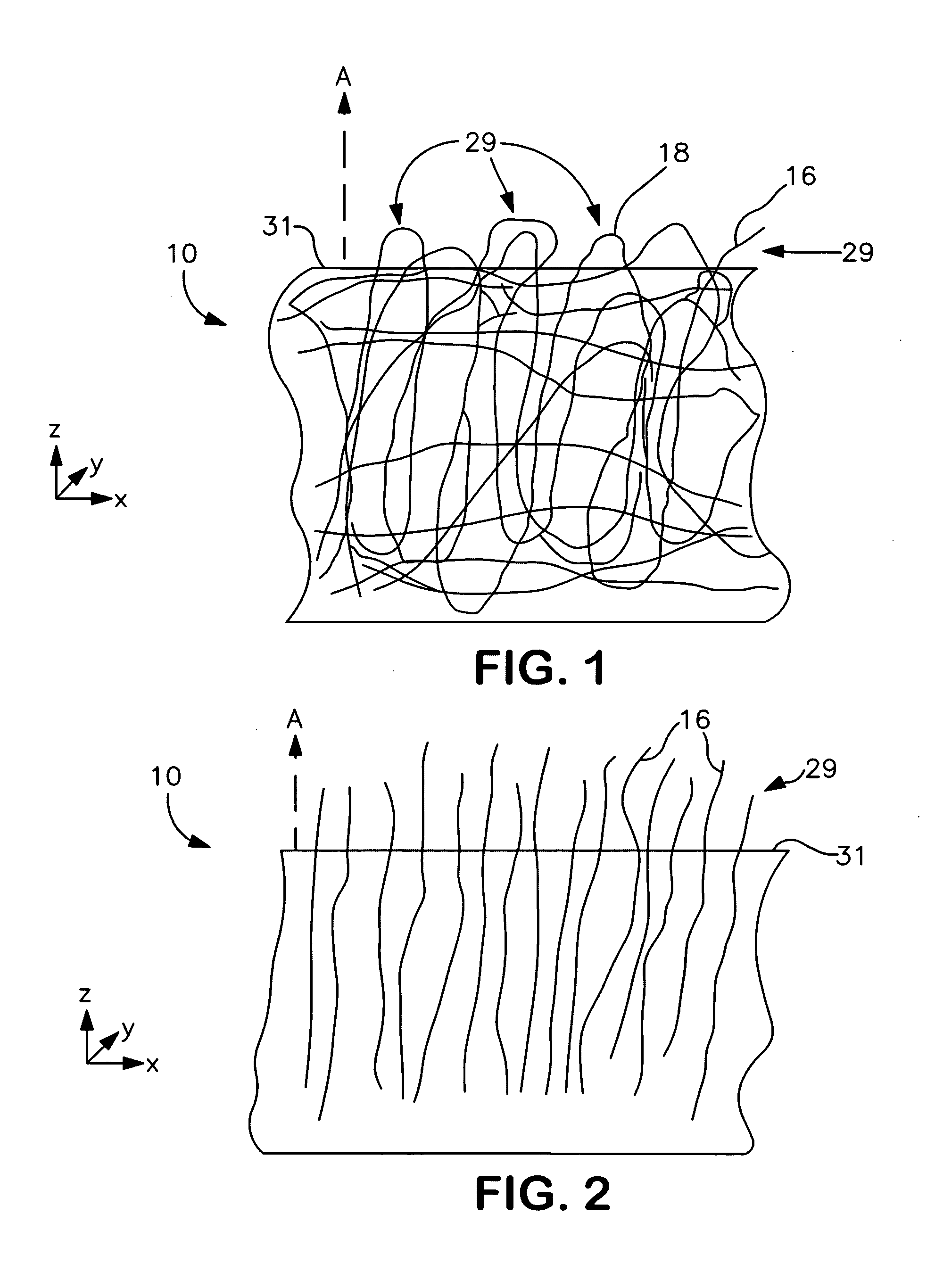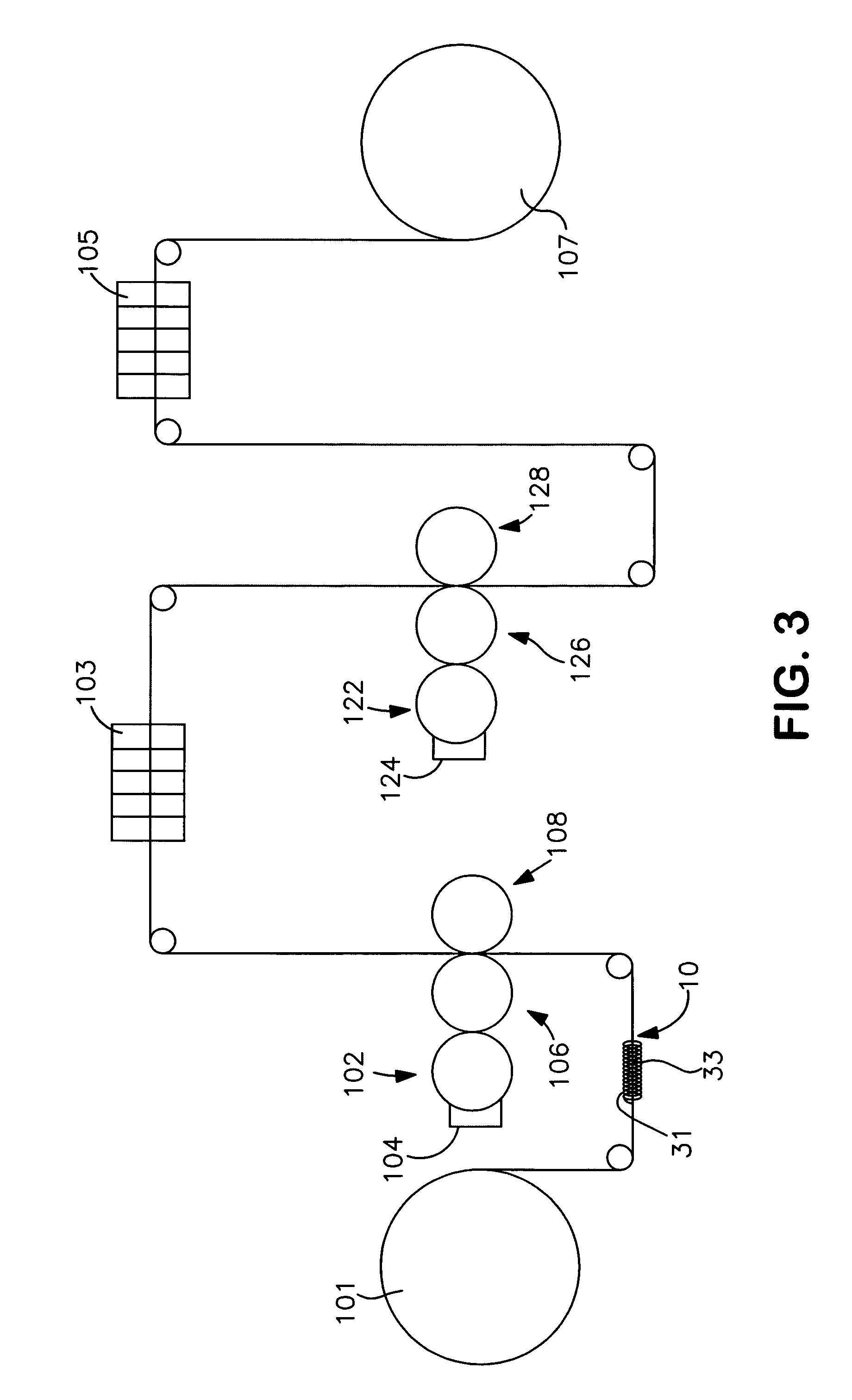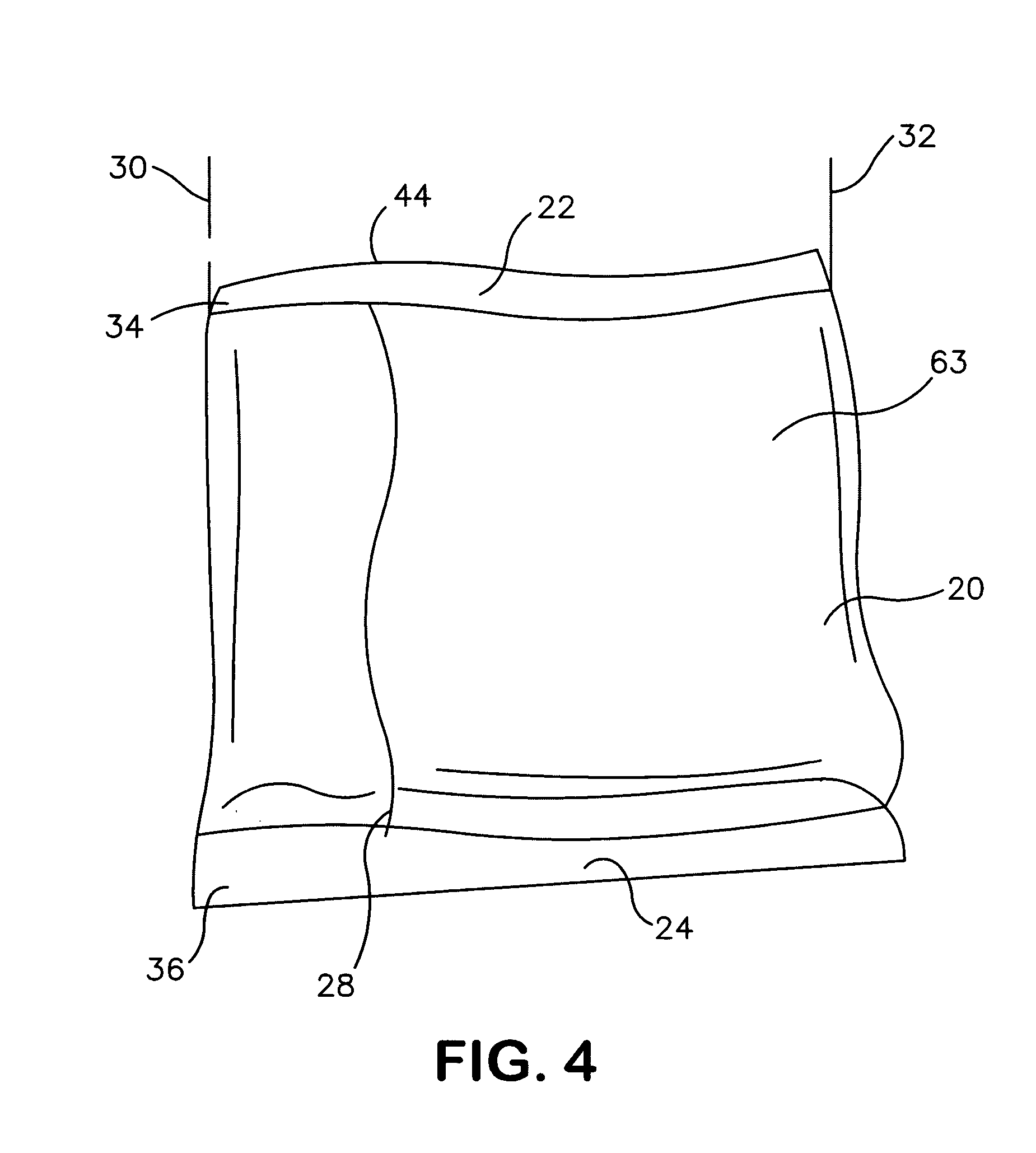Odor control substrates
a technology of odor control and substrates, applied in the field of odor control substrates, can solve the problems of reducing the ability of odor control to function in a variety of applications, increasing the stiffness of the material, and often depleting the odor control properties before us
- Summary
- Abstract
- Description
- Claims
- Application Information
AI Technical Summary
Benefits of technology
Problems solved by technology
Method used
Image
Examples
example 1
[0080] The ability to apply an odor control coating to a substrate in accordance with the present invention was demonstrated. Initially, a 6″×12″ fabric sample was provided for coating. The sample contained a polypropylene spunbond web (basis weight of approximately 0.5 ounces per square yard) laminated to a polypropylene film (pre-stretched 80%). The laminate was also applied with a blend of bicomponent fibers (1% by weight of the fabric) and polyester fibers (1% by weight of the fabric) by extruding the fibers from a spinnerette and then thermally bonding them to the spunbond / film laminate. The bicomponent fibers were obtained from Fibervisions, Inc. of Covington, Ga. under the name “ESC 215”, which had a polyethylene sheath and polypropylene core, a denier of 1.5, and 0.55 wt. % “HR6” finish. The polyester fibers were obtained from Invista of Wichita, Kans. under the name “T-295”, which had a denier of 6.0 and contained a 0.5 wt. % L1 finish.
[0081] An activated carbon ink was al...
example 2
[0083] An activated carbon ink was coated onto a fabric as described in Example 1, except that the ink was applied to the substrate using a steel gravure printing roll. 50 milliliters of the carbon ink was placed in a Pyrex glass pan. The gravure roll was rolled up and down in the pan of ink to coat the roller. The coated roller was then placed onto the fabric and rolled down the sample to deposit the ink onto the top fibers of the fabric. The coated substrate was dried in a convection oven at 85° C. for 5 minutes. The resulting solids add-on level (dry) was 10%. The sample remained extensible, and no rub-off or loss of coating was observed upon stretching and releasing.
example 3
[0084] An activated carbon ink was coated onto a fabric as described in Example 1, except that the ink was applied to the substrate using a rubber printing roll obtained from Michaels, Inc. under the name “Speedball.” 50 milliliters of the carbon ink was placed in a Pyrex glass pan. The rubber roll was rolled up and down in the pan of ink to coat the roller. The coated roller was then rolled across the sample to deposit a thin coating of the ink onto the top fibers of the fabric. The coated substrate was dried in a convection oven at 85° C. for 5 minutes. The resulting solids add-on level (dry) was 0.8%. The sample remained extensible, and no rub-off or loss of coating was observed upon stretching and releasing.
PUM
| Property | Measurement | Unit |
|---|---|---|
| Fraction | aaaaa | aaaaa |
| Angle | aaaaa | aaaaa |
| Angle | aaaaa | aaaaa |
Abstract
Description
Claims
Application Information
 Login to View More
Login to View More - R&D
- Intellectual Property
- Life Sciences
- Materials
- Tech Scout
- Unparalleled Data Quality
- Higher Quality Content
- 60% Fewer Hallucinations
Browse by: Latest US Patents, China's latest patents, Technical Efficacy Thesaurus, Application Domain, Technology Topic, Popular Technical Reports.
© 2025 PatSnap. All rights reserved.Legal|Privacy policy|Modern Slavery Act Transparency Statement|Sitemap|About US| Contact US: help@patsnap.com



